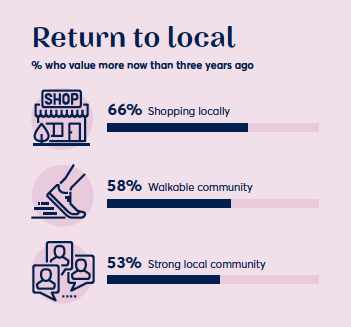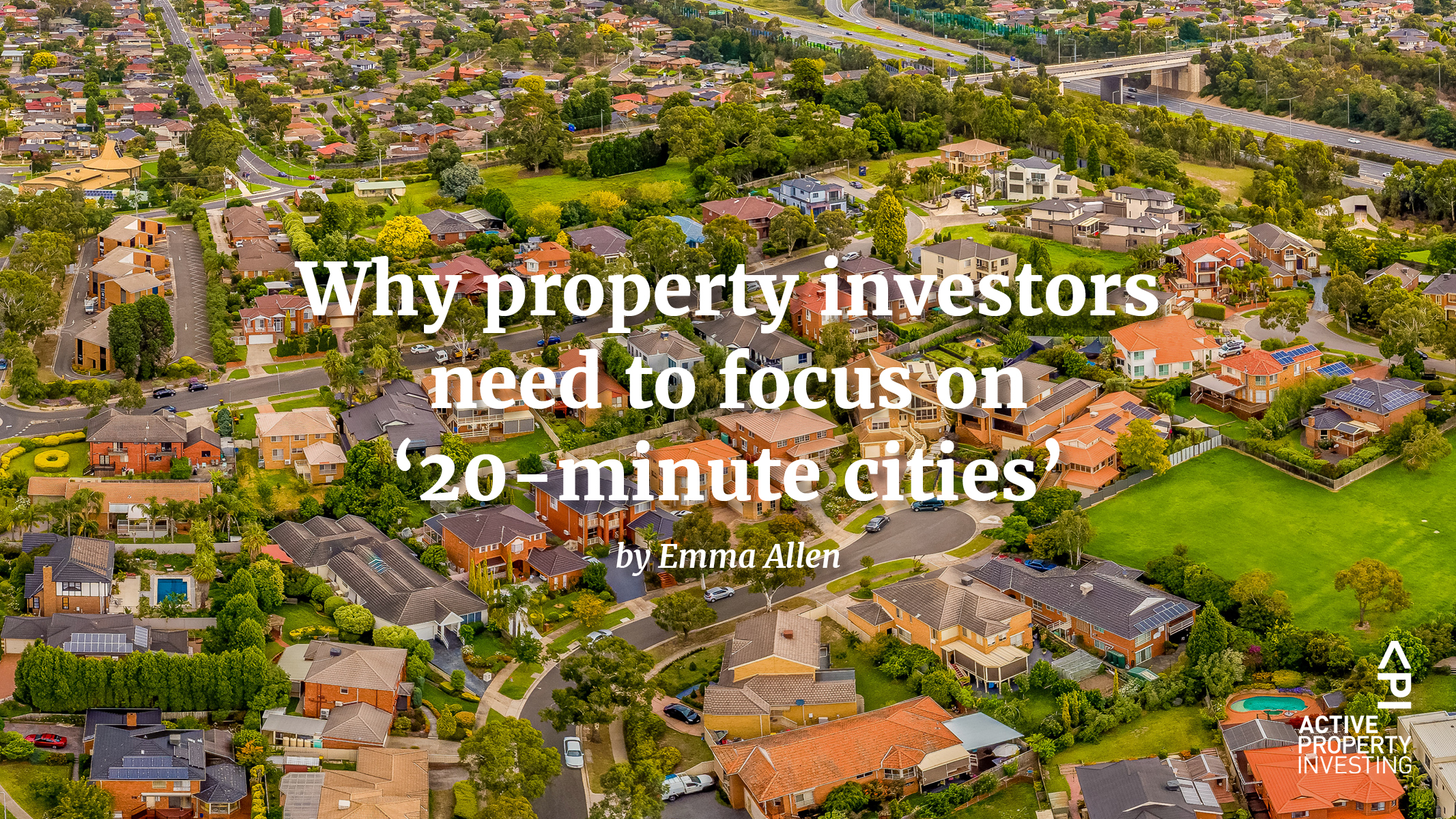Why property investors need to focus on ‘20-minute cities’
It’s been 18 months since the pandemic first swept into Australia. Since then, the COVID outbreak has been a catalyst to change both the way we live and what we value about the places we live in.
And while COVID itself isn’t going to stick around at this intense level forever, its legacy is likely to last quite some time.
One big change we’re seeing is the fact that people value different things about their homes. They now want to be closer and more connected to their communities, which has prompted the trend of “20 minute cities”.
Which brings me to my point: as a property investor, how you can take advantage of this trend to buy real estate that holds appeal well into the future?
20 minute cities: what are they?
The 20-minute city is a concept that is emerging in metropolitan planning, especially in growth corridors.
With the pandemic changing the way we live, people are redefining what matters to them most. Living in close proximity to the things they really care about – like work, healthcare, shops, restaurants, cafes, parks and beaches – now really matters.
A 20-minute city encompasses space for leisure, recreation, work, amenities and services – put simply, being within 20-minutes drive of everything they value bodes well for ordinary life as well lock-down type restrictions.
But there’s a second, related trend emerging around this one.
In his new McCrindle report, Australia towards 2031: The demographic, consumer and behavioural trends shaping the nation, social analyst Mark McCrindle confirms that people don’t simply want to be near the things they value; they’re also changing the things they value.

Image Source: McCrindle
It’s no longer just your mega shopping centres and bustling entertainment precincts that appeal.
People are getting back to basics and staying local – they love their local hole-in-the-wall coffee shop, and the restaurant down the street that’s owned by people in their neighbourhood. People are genuinely wanting to support local business but it’s also the ease and accessibility of a location that makes it more liveable and desirable.
At API, we draw on our experience to guide our property research to stay at the forefront of these fundamental lifestyle changes. We focus on identifying these types of qualities during our due diligence process and when culling a specific property or location.
We continue to highlight these features as we settle into the new norm, because, as McCrindle, says, these changes are here to stay.
“Much of what we had pre-COVID-19 we will never see again,” he says.
“From regional growth to redefined work practices, it’s not the continuation of how things were but the start of a whole new reality. We are not experiencing a reset as much as a reinvention.”
How can you invest in 20-minute cities?
In the past, property trends have focused on proximity to the Central Business District (CBD).
The API process takes this a step further to look at the connectivity between majority activity centres and the metropolitan planning of our cities and major regional centres.
The emergence of a 20-minute city makes this a simple concept to explain and one that is highly demonstrated as the Australia’s largest cities (Sydney and Melbourne) sit in lock-down. Investing in a location where people can live comfortably by having things within 20 minutes reach becomes even more desirable from a rental, capital growth and resale perspective.
When considering investing in 20-minute cities you will quickly discover that there are two distinct types. In older parts of Sydney such as built-up coastal suburbs, a 20-minute city with everything in close proximity might fetch a premium price for properties. Investors might be able to capture infill-sites or properties within existing suburbs to reap the benefit of a 20-minute city that is already ‘established’.
But what happens if your budget doesn’t quite stretch that far?
‘Emerging’ locations and growth corridors as a result of urban sprawl is taking into consideration the 20-minute city concept and ensuring that new land sub-divisions includes accessibility to employment, key services and amenities to make it a complete community. The difference is that initial entry prices can be lower, then as the infrastructure develops and the community grows the investment matures over time.
Both ways of investing are feasible, they are just different. The API research team appreciates that investors have different appetites, likes and timeframes so the 20-minute city can work for many people.
This move towards more local, community-based lifestyles is something that more than half of Australians value, McCrindle says.
“The preference for local is likely related to the increasing desire for walkable communities, with 58 of Australians valuing a walkable community more now than they did three years ago,” he adds.
For investors, what this means a subtle but meaningful shift in your investing strategy to focus on areas that tick these local boxes. If you’d like help working out which type of property makes the ideal investment for you, or if you already own property and you would like some professional guidance as you build your portfolio, contact our experienced team today.

